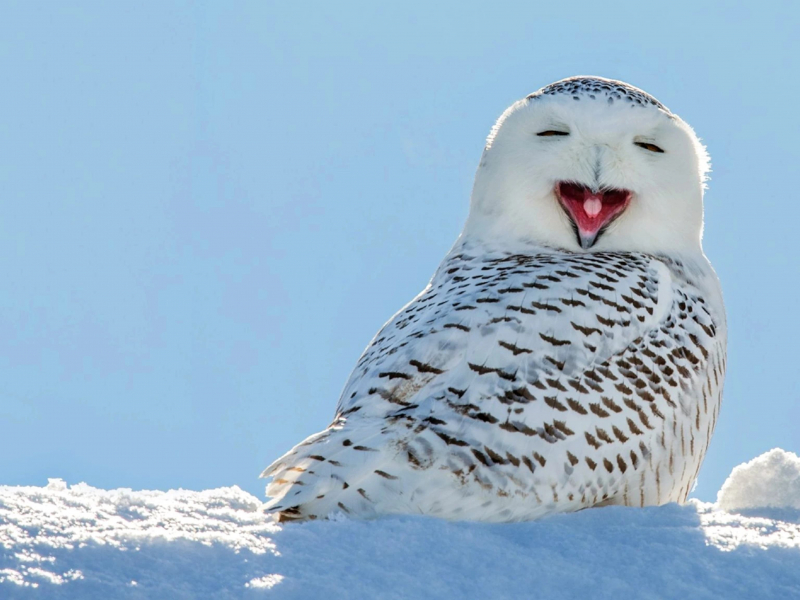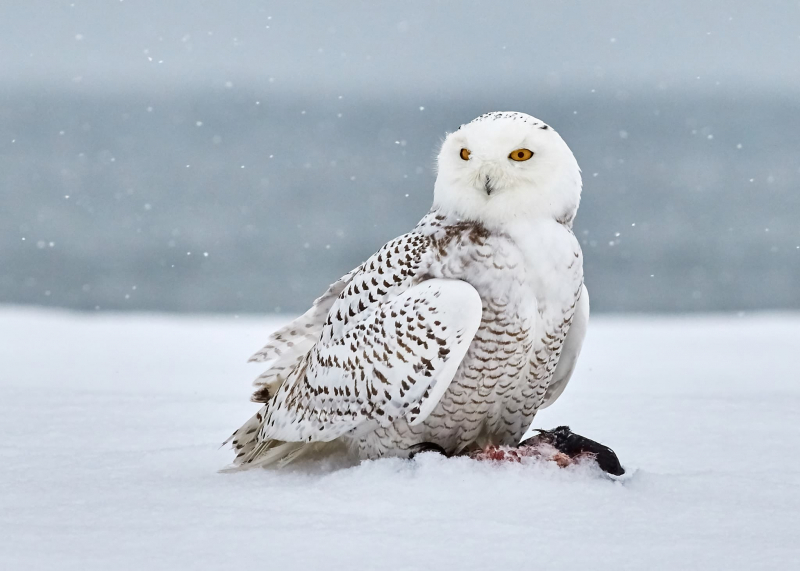Snowy Owl

The Snowy Owl (Bubo scandiacus), also known as the polar owl, the white owl, and the Arctic owl, is a large, white, owl of the true owl family. In vast, treeless regions known as tundra, these huge owls spend the majority of their time. On the ground or on small poles, snowy owls perch. They wait patiently there while hunting for prey. Lemmings, tiny rodents that resemble mice, are their preferred prey, but they also hunt other small rodents, rabbits, birds, and fish.
Despite having great vision, snowy owls cannot see their prey when it is hidden by snow or a heavy layer of vegetation. The owl uses its other great sense - hearing to catch those prey. Snowy owls typically fly close to the ground when in flight. They fly toward their prey after seeing it and share it with their enormous, sharp talons, or claws, on their feet. The snowy owl is active throughout the day, especially in the summer, unlike most owls who sleep during the day and hunt at night. They typically are at their busiest during dawn and dusk. Most snowy owl pairs remain together forever. Three to eleven eggs can be laid at once by female snowy owls in a ground nest. Snowy owls typically lay more eggs when food is plentiful than when it is scarce.











